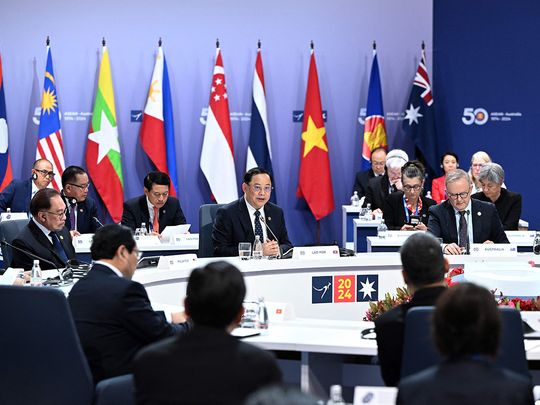
Earlier in March Australia hosted its second summit with the Association of Southeast Asian Nations (ASEAN) in the Victoria state capital city of Melbourne.
The occasion marked 50 years since Australia became ASEAN’s first official ‘dialogue partner.’ The summit was intended to build on the progress in ASEAN — Australia relations since Labor Party government under Prime Minister Anthony Albanese came to power in 2022.
Pledging to bolster relations with the region Albanese followed the pattern of Labor (Center/left) governments in Australia who emphasise Australia’s regional commitment and engagements. The Liberal Party (actually conservatives), on the contrary seems to align more with the Anglosphere.
Xanana Gusmão, the leader of aspiring ASEAN member Timor-Leste, and New Zealand’s Prime Minister Christopher Luxon also attended the meeting.
This was the second such summit hosted by Australia — the first being in 2018 when Malcolm Turnbull was the prime minister.
Support for ASEAN outlook
The summit focused predominantly on economic cooperation, particularly in renewable energy. The final document called for peaceful resolution of South China Sea disputes through legal and diplomatic processes in accordance with international law.
Closing the Summit Australia’s Prime Minister Albanese emphatically reassured the ASEAN leadership that “more than any other part of the world, Southeast Asia is where Australia’s destiny lies.” Australia, he added, ‘will continue to support your ASEAN Outlook’ — a 2019 document that envisions the subregion’s role in the wider Asia — Pacific and to ensure the stability and peace in the region.
The summit seemingly succeeded in conveying Australia’s renewed commitment to ASEAN. The most significant outcome was Australia’s pledge to set up a $1.3 billion trade and investment facility.
Australia’s relations with the ASEAN are marked by a considerable gap between the rhetoric of leaders on either side.
Most of Australian public, and a significant portion of leadership has yet to understand that the relationship between Australia and the ASEAN has transformed over years in favour of the ASEAN. A few decades back Australia’s GDP was more than the combined GDP of ASEAN countries. Today ASEAN’s GDP is double that of Australia, larger than that of India and four-fifth of Japan.
Both geography and economics makes ASEAN — Australia relations vital by themselves but these elements should serve as a starting point for developing new possibilities in the increasingly complex region that has become the focus of the two super powers — China and the US.
The Summit was an opportunity for Australia to demonstrate if it is able to adjust its strategic posture in the rapidly evolving Asia-Pacific region. Caught between China and the US, Australia is yet to embrace ASEAN’s ‘inclusive regionalism’ and its centrality in mediating the struggle for dominance of the region between the great powers.
Given the escalating polarisation in the region, and Australia’s Anglosphere tilt it may not be easy for Australia to place itself where it is not seen as an appendage of the super power afar.
With these indicators and other states vying for influence, Australia needs to double down its efforts to engage the ASEAN to maintain its primary relevance for them.
Sajjad Ashraf served as an adjunct professor at the Lee Kuan Yew School of Public Policy, National University of Singapore from 2009 to 2017. He was a member of Pakistan Foreign Service from 1973 to 2008 and served as an ambassador to several countries.








